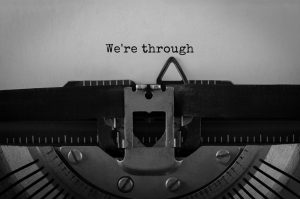How Your Attachment Style May Influence the Way You Handle Divorce
 Divorce is a highly individualized experience, and our reasons for arriving at this life-altering decision are as diverse as our responses to the divorce process. Often, individuals undergo an evolution of feelings during and after divorce, experiencing a series of emotions that are similar to the five stages of grief: denial, anger, bargaining, depression and acceptance. Interestingly, however, the time that a person spends in each phase, and the extent to which they feel each of these emotions, can be significantly influenced by their attachment style. In this article, we will explore the origin of attachment style and how it manifests during divorce, influencing how well we cope and ultimately, how quickly we move forward.
Divorce is a highly individualized experience, and our reasons for arriving at this life-altering decision are as diverse as our responses to the divorce process. Often, individuals undergo an evolution of feelings during and after divorce, experiencing a series of emotions that are similar to the five stages of grief: denial, anger, bargaining, depression and acceptance. Interestingly, however, the time that a person spends in each phase, and the extent to which they feel each of these emotions, can be significantly influenced by their attachment style. In this article, we will explore the origin of attachment style and how it manifests during divorce, influencing how well we cope and ultimately, how quickly we move forward.
Attachment style refers to the way in which we orient ourselves to others in friendships, emotional affairs, and romantic relationships. Essentially, it is the dynamic that we establish with those in our lives based on our early interpersonal relationships, primarily with our parents and influential caretakers. The underlying presumption of attachment theory is that our early relationships inform the working models that we use to form and interact within our adult relationships. In order to understand the impact of attachment style on individuals during divorce, it is essential to understand each form of attachment. There are four distinct attachment styles, each of which is outlined in more detail below.
- Secure attachment: typically results from solid, safe, affirming relationships early in life. These individuals grow up feeling comfortable with others and forming reciprocal relationships. They do not have anxiety about being accepted or being alone. They view themselves and their relations in a positive light and seek to form bonds that allow for both intimacy and independence.
- Avoidant (Fearful) Attachment: generally results from early relationships with emotionally unavailable parents or caregivers. These individuals become conditioned to avoid emotional intimacy, to deny their inherent needs, and to fear, often unconsciously, trusting others in their adult relationships. Although they have the same feelings and desires for approval as others, they are prone to suppressing these feelings and desires as a protective mechanism.
- Anxious (Preoccupied) Attachment: may result from early relationships with highly variable parents or caregivers. In other words, the parent may at times be affirming and available, while at others times, he or she may be unresponsive or disapproving. Individuals with this attachment style often seek approval in their adult relationships, investing completely in others and often coming across as needy or overly worried.
- Disorganized Attachment: typically caused by early trauma, often inflicted by a parent or primary caregiver. When a parent is unsteady, it creates a sense of fear in their child, and this unpredictability prevents the child from developing organized response mechanisms to address their needs. This often leads to unstable adult relationships and disorganized or unpredictable behavior in the affected person.
When considering the impact of our early relationships, how they inform our attachment style, and how that further influences the partners that we choose and the relationship dynamics that we establish as adults, it follows that our attachment style would also come into play when dissolving a significant relationship, such as a marriage.
Research suggests that securely attached individuals respond best to divorce situations, seeking support from others and developing effective coping mechanisms to handle their feelings. On the other hand, anxiously attached individuals tend to respond most negatively to divorce, experiencing deep feelings of rejection, internalizing these feelings, and understanding them as a direct reflection of their inherent inadequacy. Avoidantly attached individuals are likely to withdraw and shut-down at the end of a relationship, suppressing the very feelings that may otherwise overwhelm them. Disorganized individuals are highly unpredictable in these situations; they often flounder about looking for an appropriate response but are ill-equipped because of their lack of appropriate modeling early in life.
Overall, securely attached individuals report the most positive emotional experiences during and after divorce. They are more comfortable transitioning to single life and are hopeful that they will find new romantic partners in the future. Fortunately, attachment style is by no means a finite condition, and with awareness, we can work to improve our future relationship dynamics. Divorce can be a trying and tumultuous experience for everyone involved, but similar to other life challenges, they provide us with extensive insight into ourselves and others. Merely observing our emotions and interactions can provide fertile ground for self-reflection and growth.
For additional information related to this issue, access the following article: Why Do Break Ups Hurt Some People More than Others?

